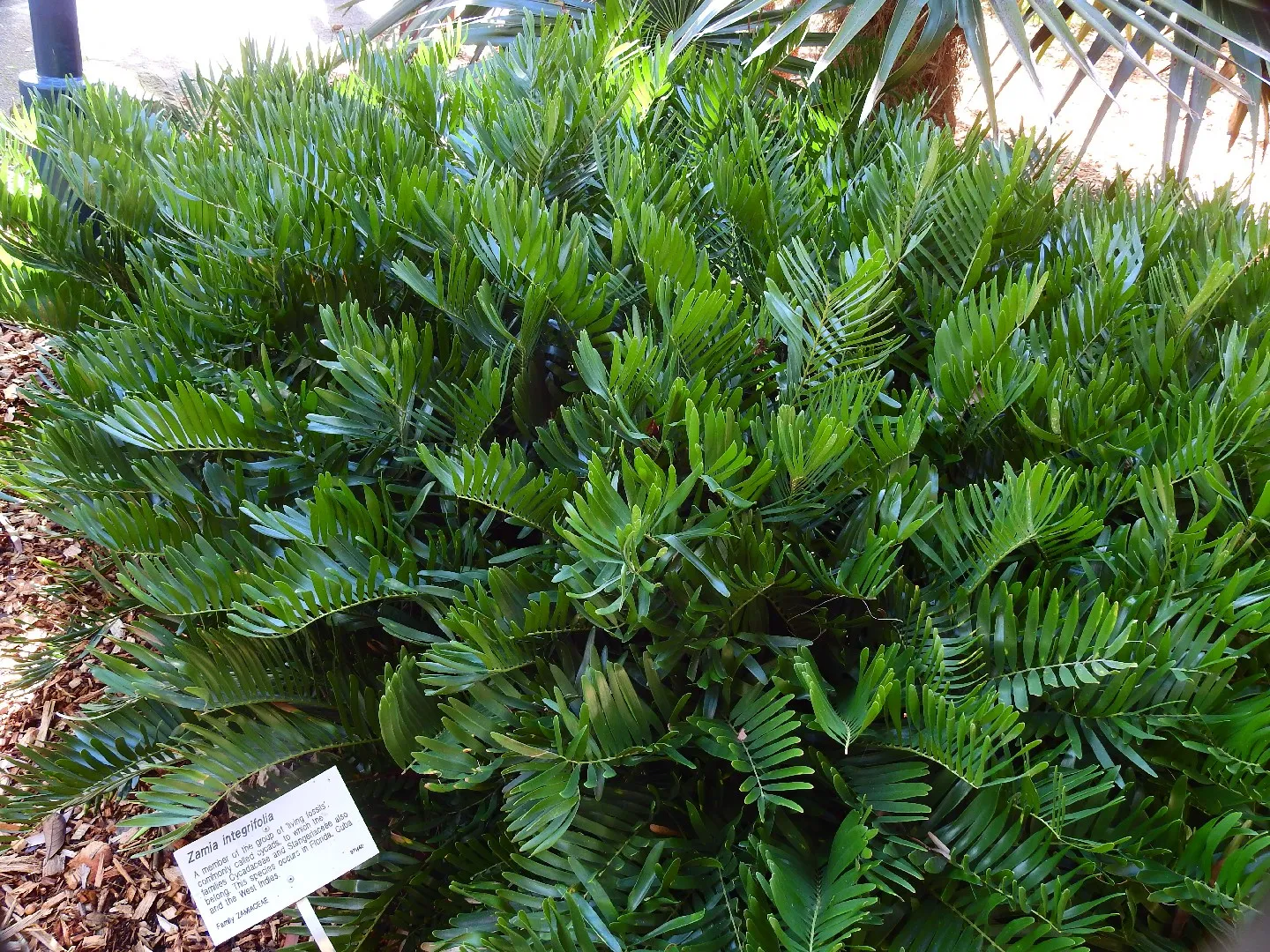
Coontie
Zamia integrifolia
Basic Information
🌿 Family: Zamiaceae🗺️ Zone: (8b-11)
Other Names:
- Florida Arrowroot
- Wild Sago
🌡️ Ideal Temperature : 60°F – 80°F
🔥 Heat Tolerance: Up to 100°F
❄️ Cold Tolerance: Down to 10°F
🌱 Type: Perennial
Layers
- Herbaceous
Companions
- Native grasses
- Wildflowers
Plants to Avoid
- None specified
Description
Coontie is a low-growing, evergreen cycad native to Florida and parts of the southeastern United States. Resembling a fern, it features feather-like, light green, leathery foliage that emerges from a large underground storage root. Typically, it grows up to 0.9 meters (3 feet) tall and wide, forming a mounding shrub over time. Coontie is dioecious, producing separate male and female cones. The plant is highly adaptable, tolerating full sun to deep shade, and is both drought and salt-tolerant once established. Notably, it serves as the sole larval food source for the Atala butterfly, making it a valuable addition to wildlife gardens.
✂️🫘 Methods to Propagate:
Coontie can be propagated through seeds or division. Seeds should be collected from mature female cones and cleaned before planting. Sow seeds in well-draining soil, keeping them moist until germination, which may take several months. Division involves separating offsets from the parent plant, ensuring each division has a portion of the root system, and replanting them.
🌞💧 Sun and Water Requirements:
Coontie thrives in a range of light conditions, from full sun to full shade. It prefers well-draining soil and, once established, is drought-tolerant. Regular watering during the initial establishment period will promote healthy growth.
🧑🌾👩🌾 When to Harvest:
While Coontie has historical significance as a source of starch (Florida arrowroot), processing requires careful removal of toxins. Due to its toxicity and the complexity of safe preparation, harvesting for consumption is not recommended without proper expertise.
Purpose
- **Ground Cover:** Coontie's dense, mounding growth habit makes it an excellent ground cover, helping to suppress weeds and prevent soil erosion.
- **Wildlife Attractor:** It is the exclusive larval host plant for the Atala butterfly, supporting local butterfly populations.
- **Medicinal:** Historically, indigenous tribes processed Coontie roots to extract starch for food; however, due to its toxic nature, this practice requires precise preparation to ensure safety.